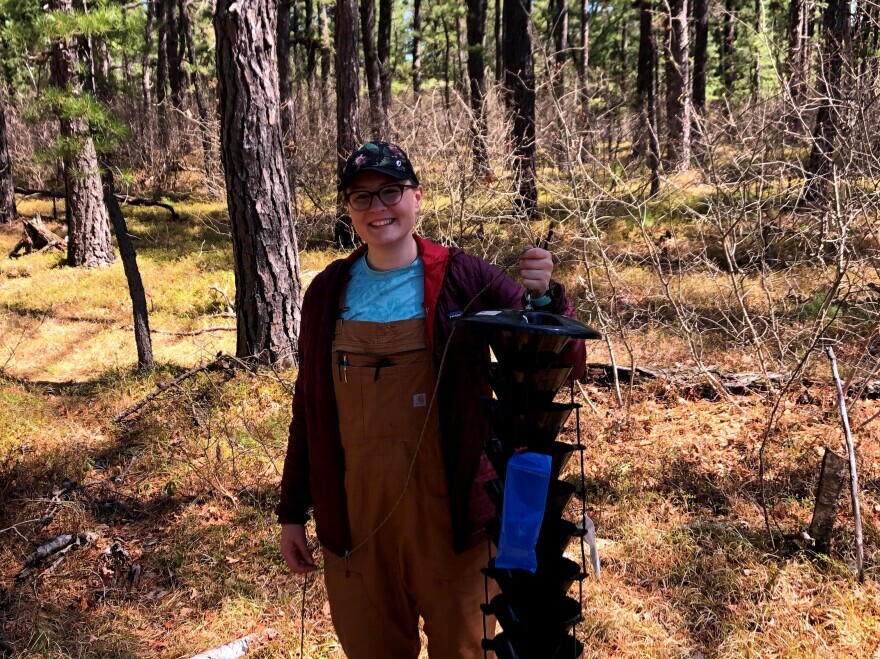Why climate change has brought southern pine beetles to New England

UNH Ph.D. student Caroline Kanaskie holds a beetle trap. Kanaskie discovered southern pine beetles in New Hampshire and Maine. (Jeff Garnas, University Of New Hampshire)
There’s a new bug in town.
Researchers at the University of New Hampshire have spotted the southern pine beetle, an insect that feeds on pine trees and can kill them in large numbers, in New Hampshire.
This is the first time the insect has been seen this far north – and Jeff Garnas, an associate professor of forest ecosystem health at UNH, says their presence is connected to climate change.
“What’s happening with climate change is that the frequency of very cold nights in the winter is becoming less and less,” he said. “Without those very cold temperatures to kill large proportions of the beetle population, they’re able to establish further and further north.”
Southern pine beetles can attack large swaths of pine trees if they’re not managed. Southern pine beetle outbreaks have caused almost $4 billion in damage since 1973 in the United States, according to the Forest Service. In the largest recorded outbreak, between 1999 and 2003, the insects impacted more than a million acres of land across seven states.
Caroline Kanaskie, a Ph.D. student working with Garnas, found the beetles in New Hampshire and Maine in November, using pheromone-baited lures and funnel-shaped traps.
The UNH team has only found a few beetles in traps so far. When they’re at a low density, the beetles subsist on trees that are already stressed, like those that have been weakened from something like a lightning strike or another insect attack.
The beetle is typically found in the southern United States and Central America. but the species has been moving north since about 2000. It was first seen outside of its normal range in the New Jersey Pine Barrens, Garnas said. And there, a warm growing season in 2010 expanded the beetle’s range and ability to harm trees.
As winters warm, the beetle has a chance to gain a foothold in places where the cold has previously kept insects away or populations low. And southern pine beetles can do a lot of damage when they’re in large groups.
